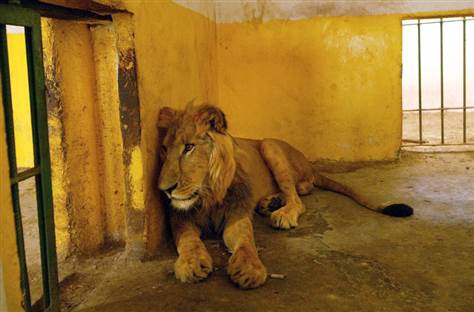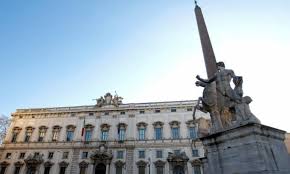
Oceania’s Vanuatu, formerly the New Hebrides, is an 80-island nation without traffic lights, street postal service, or even a McDonalds. What it lacks in 21st-century amenities, it makes up for with traditional culture. Vanuatu hosts some of the most remote and untouched bush tribes in the world.
Seven years ago, while cruising the South Pacific on my sloop, I visited Espiritu Santo, Vanuatu’s largest island, and trekked deep into the highlands. After three days I stumbled upon the tribe of Mareki, a village living as it had for centuries. Now I’m returning as a solo videojournalist—with the heart of an anthropologist—hoping to capture Mareki’s remarkable lifestyle on film before the modern world catches up with it.
After traveling from San Francisco for 72 hours on four different air carriers, I finally landed on Espiritu Santo. It is located about 1,303 miles (2,172 kilometers) northeast of Sydney and 3,450 miles (5,750 kilometers) southwest of Honolulu.
My expedition began by hitching a ride to Numuro village near the southern end of the island. After hiking inland for a few hours, I stopped at the tribe of Fafafia for the night. Here I met an English speaking bushman named Jeffrey Karai who agreed to take me into the interior. He was the ideal guide; born in the bush, he spoke nearly fluent Kia, which is one of the most widely spoken dialects in the Santo interior. The next day we spent a long morning hiking to Supemalo, a small village of thatched huts anchored atop a spiking mountain.
Isolated Tribes
There are many reasons why Mareki and other bush tribes of Santo are so traditional. Everyone agrees it’s because they’re isolated; but the cause of their isolation is a point of contention.
University of the South Pacific’s senior lecturer in Pacific languages, Robert Early, believes it has to do with land ownership. “The men simply don’t want to leave the land that’s their birthright to own, hunt on, and cultivate. You can call it a matter of pride.”
The business people in Santo’s tiny town, Luganville, have another opinion. They say it’s because there’s little opportunity on the island, giving no incentive for bush people to leave the interior for the wealthier villages on the coasts. Indeed, 80 percent of Vanuatu’s population exists on subsistence farming.
I had a different take—the reason had to be the imprisoning geography. The interior of Santo is one forested vertical mountain after another, separated only by deep, often impassable rushing waterways.
At noon, Jeffrey and I arrived at Supemalo. I presented the chief with a machete and he welcomed me to stay in his hut for as long as I liked.
I spent the next week recording the daily lives and customs of the tribe. While Supemalo is not as traditional as Mareki, nearly all the villagers still dress in bush attire. Women go topless, wearing Nangaria leaves; men wear mal mals, similar to loincloths. Christianity has not crept into the traditions or dances. The people are raw and free—animism and black magic form the foundation of their beliefs.
Leeches, Snakes, and Malaria
But Mareki is where the real kastom—the ancient Vanuatu way—lives in Santo. It’s also three huge, rugged mountains away from Supemalo. A fever and my sprained ankle sent me to Luganville for a few days. But soon I found Jeffrey again at Fafafia and began the grueling hike to Mareki. We broke our trip by spending the first night near Supemalo.
The next day, Agmol, a village wise man, joined our expedition. For many tiresome hours we traversed slippery slopes. I often crawled on all fours to avoid falls on trails that sometimes disappeared for hundreds of meters. Leeches, snakes, and malaria were always on my mind. The humidity this far into the jungle was shocking; it felt like a water balloon exploded on my face.
The villages we passed through were only kastom now. The further we went into the interior, the friendlier the people became and the less evidence of modern culture I saw.
Plastic containers gave way to wood bowls; nails to jungle vines; metal blades to sharp stones; kerosene lanterns to torches; mal mals made with cloth were replaced with loins made from the bark of the Melig tree. Finally, near sundown, Jeffrey pointed to smoke rising from the forest. Mareki, a group of eight huts, rested as it has for centuries on a sharp mountainside.
Presenting the Photograph
It was dark when we walked into the village. I was exhausted and soon passed out on my sleeping mat on the ground. In the early morning an ancient face woke me; a wooden bowl of prawns and bananas had been placed in front of me. Jeffrey and Agmol were already outside talking with the high chief. I grabbed the photo I took of Mareki in 1995 and presented it to him.
Slowly, all the villagers began gathering around the picture, pointing at it—amazed they were seeing themselves. This wasn’t the first photo brought into the village, but it was the first picture ever taken of themselves—and it was the first photo brought back developed. Jeffrey confirmed in Kia what I suspected in 1995. I was, incredibly, as the villagers like to say, “the first white man in Mareki.”
This left me in a unique position. Not only was I welcomed as a guest, something Mareki gets, at best, twice a year, but also I was welcomed as the first foreigner to visit. They received my return to their tribe as an honor, and the chief granted me what I desperately wanted: permission to use my cameras. It’s a privilege not always granted by remote tribes in Vanuatu.
It’s rare to catch a culture this unaffected by the outside world. One highlight was filming the high chief’s mother—whose age was explored one evening over a kava ceremony. After hours of intense discussion it was pinned between 86 and 104, though no one knew for sure, including her. At just over four feet tall and bearing a bone through her nose, she might very well be one of the oldest bush women in the South Pacific.
Coming Change
Days followed where I worked in the garden with the villagers, collecting the staple diet of the bush land: taro. Some afternoons I went lizard hunting and prawn collecting with the young men. Other highlights include cooking with bamboo shoots instead of pots, watching the people perform a kastom dance, and taking an hour to explain to the high chief what happened on September 11, 2001 to the “biggest village” in America.
The women were often difficult to approach; they were incredibly shy. A number of times, though, I had special moments with them. One included the elder of the chief’s two wives. She was breastfeeding her child and let me get within a few feet of them, just enough to take some close-ups with my camera. In sign language I promised her a photo of her child when I returned again. She seemed to understand me and appeared delighted.
After a week, I went for a walk alone to a vista overlooking the rain forest. I was melancholy because I knew Mareki couldn’t remain so traditional forever. Already the young boys were asking their parents if they could visit Luganville. And the kerosene lantern I brought to the chief made the other men of the tribe jealous.
With the village’s child mortality rate topping 30 percent, it’s probably best that advancements and new ideas enter the bush tribe mindset. But as helpful as 21st century influence can be, a side of me knows that something special will be lost—I just hope when I return to Mareki again, it won’t be lost completely.






